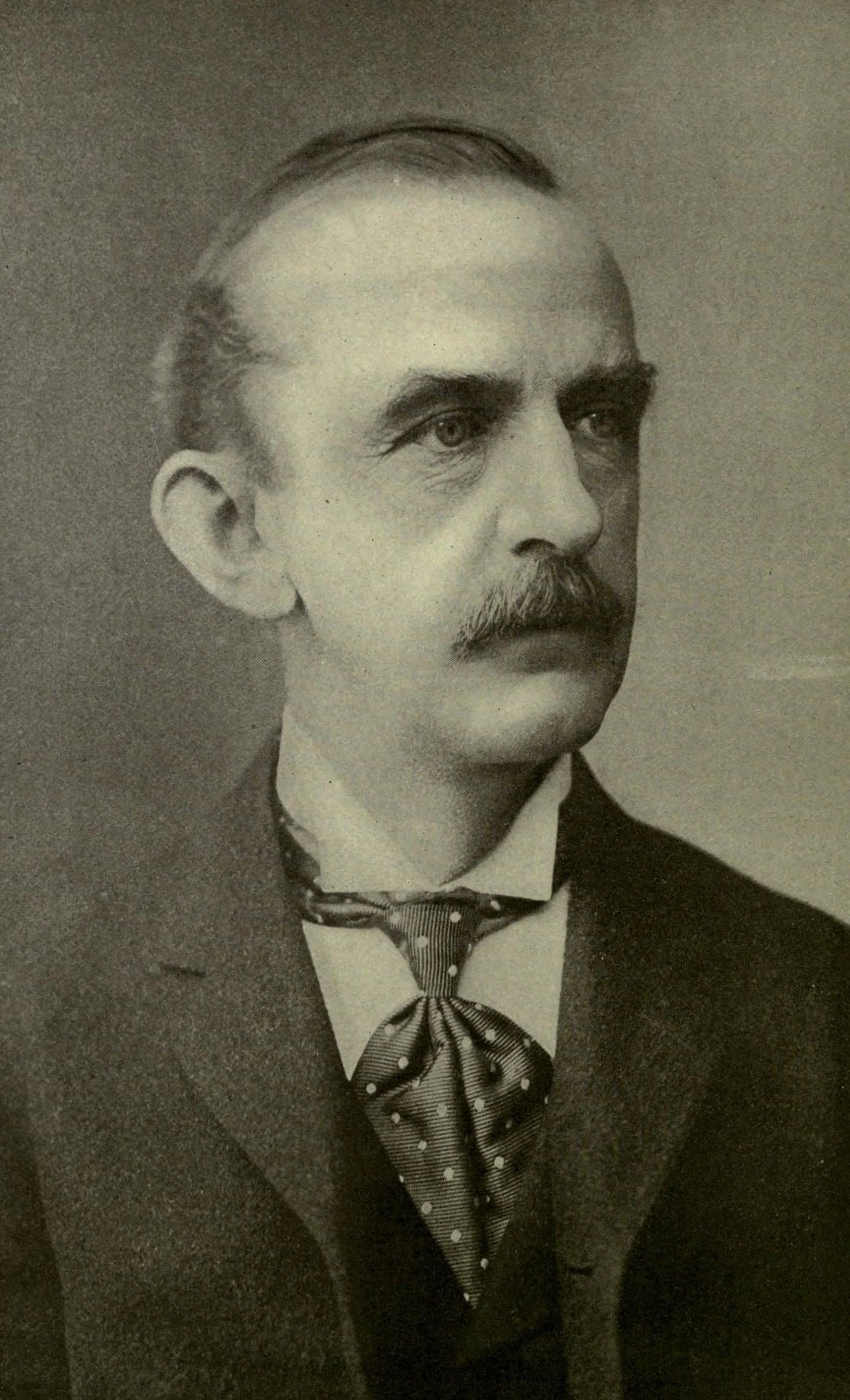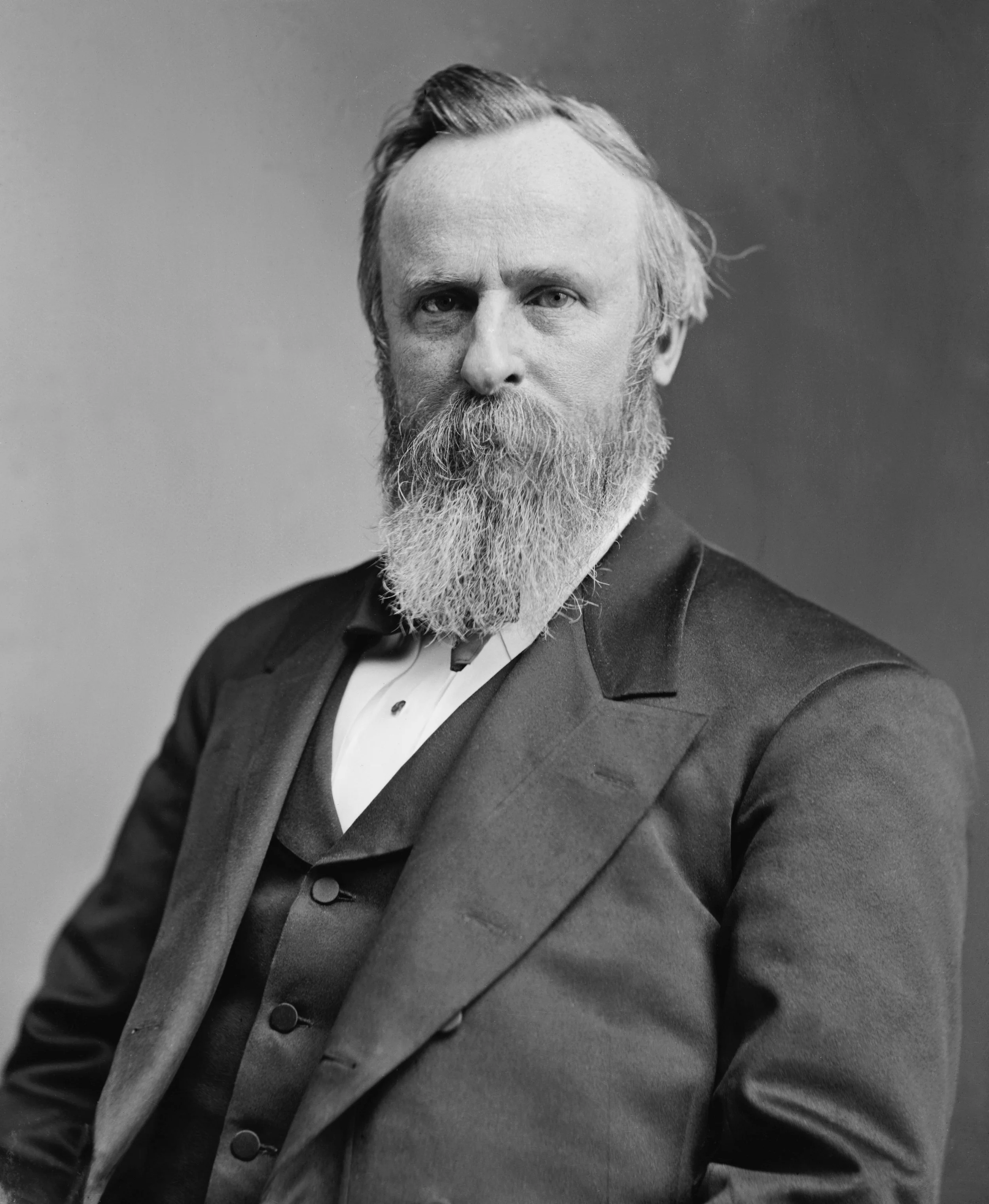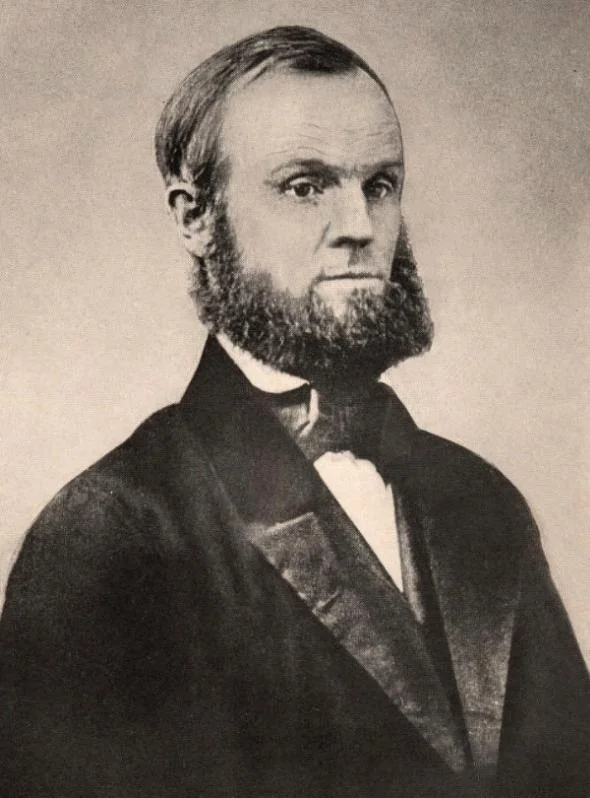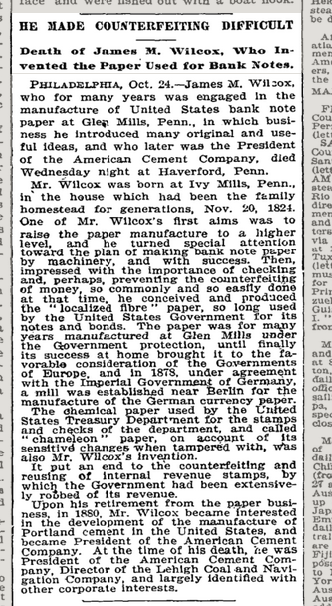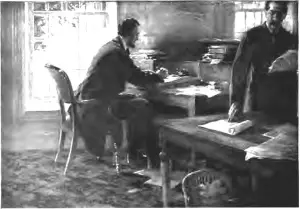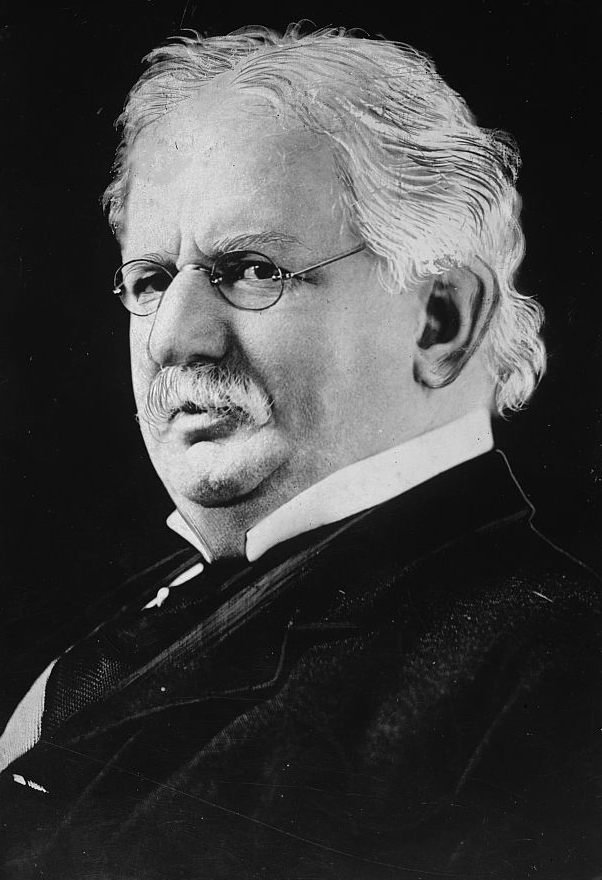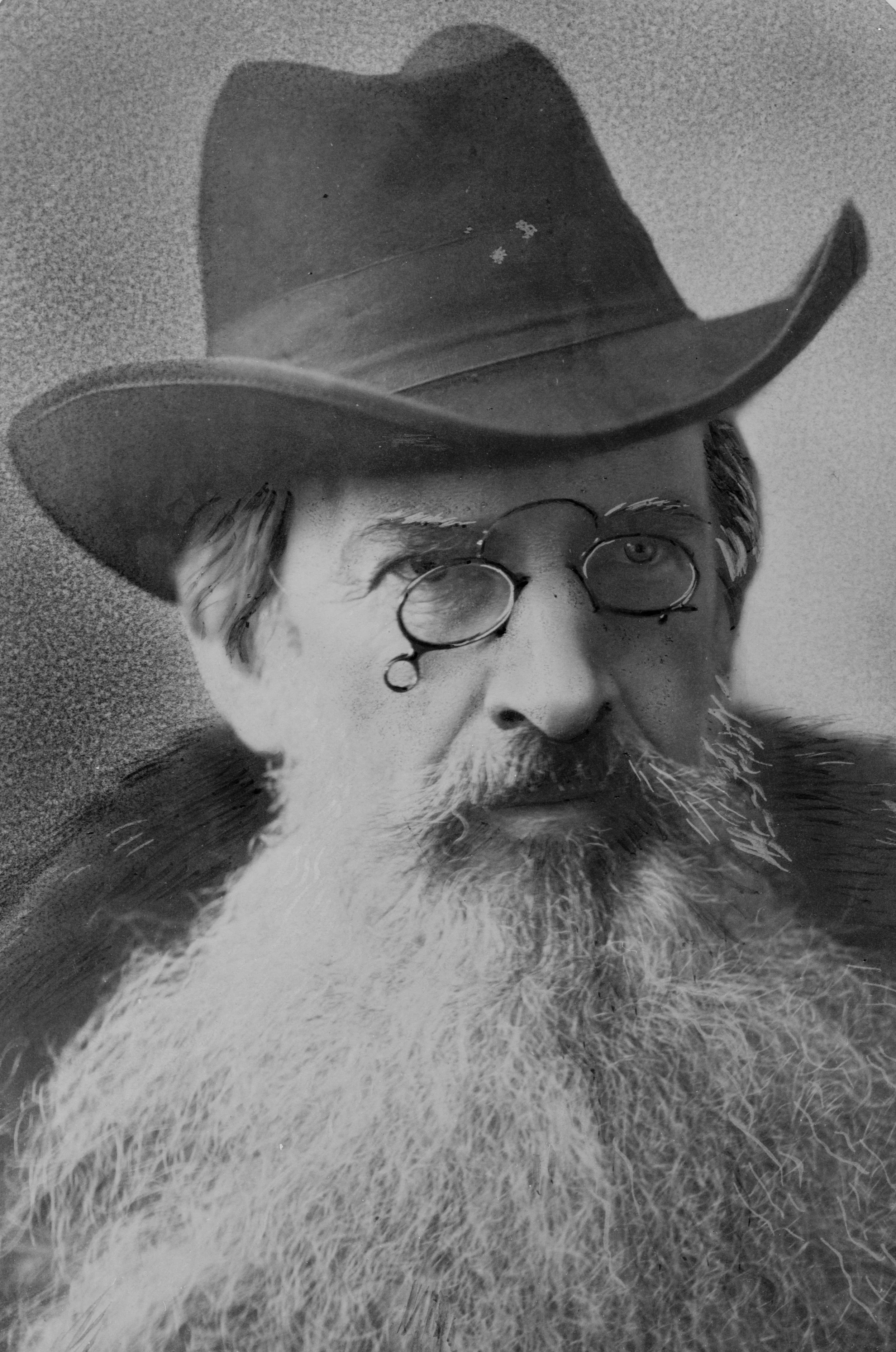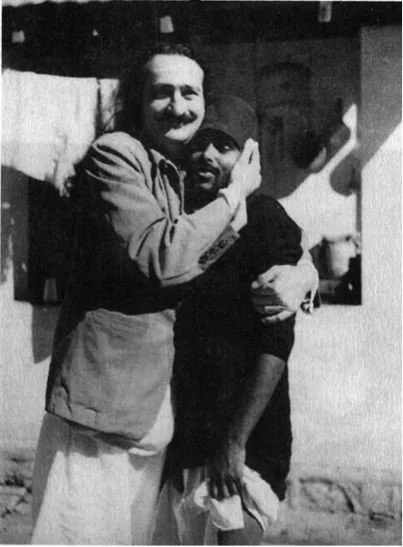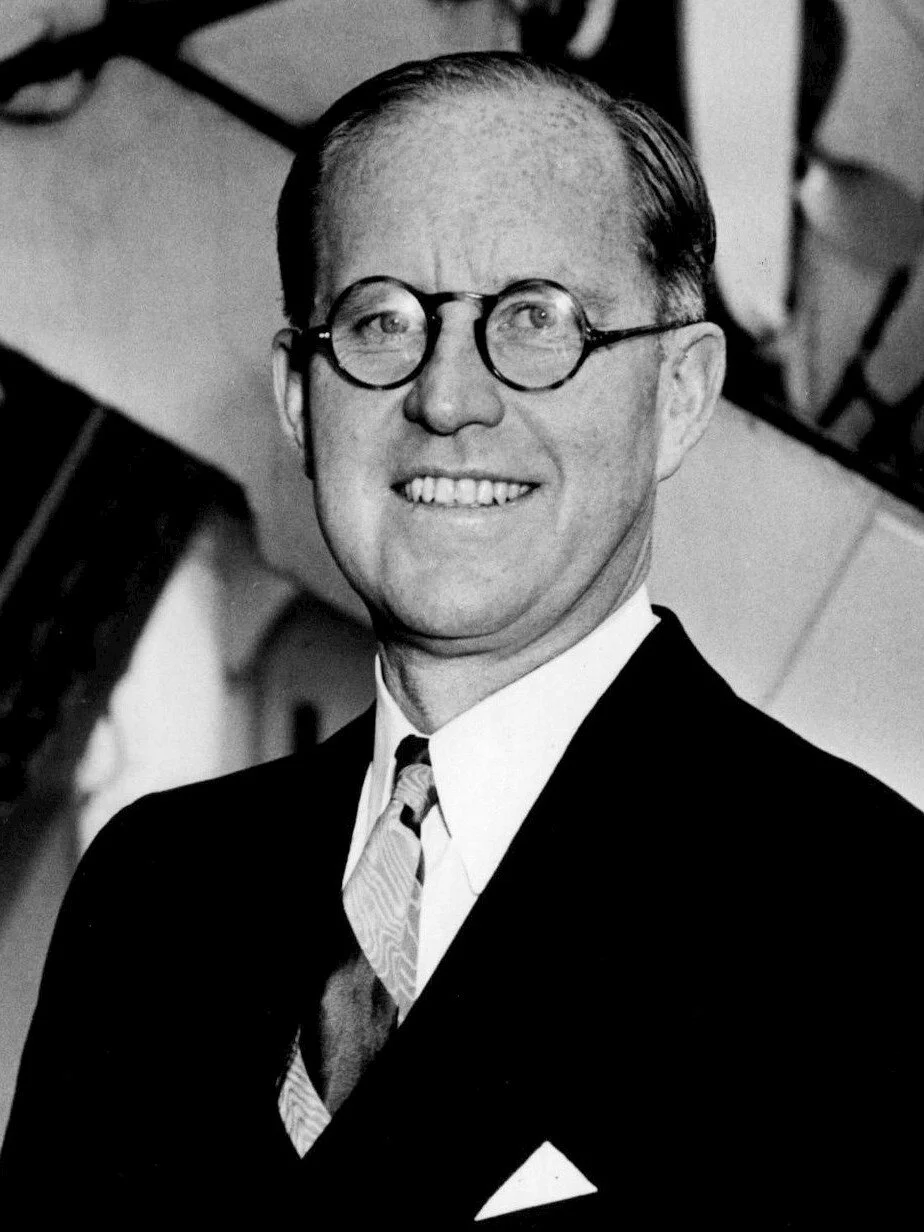Where Did All the Lincoln Money Go?
In my previous post “The Galician Gang, Apple Computer and James Jesus Angleton” I wrote about the founding of Silicon Valley and the pilfering of Shockley Semiconductor by the “Traitorous Eight” and their financier. Their financier was Hayden, Stone & Co. (1892-1979). [See History of Semiconductor Engineering, Lojeck, 2007. Page 103]
Who were Hayden, Stone & Co.?
Hayden, Stone & Co. were a Boston investment brokerage which profited from the Lincoln Gang’s Reconstruction grabbings. The Reconstruction, that period of military occupation of Southern states between 1865-77, ought rightfully be considered the first “mobbing” of the United States’ economy. This mobbing happened on both sides of the Mason-Dixon line. Hayden, Stone & Co. represents the second generation of this mob’s operations.
Lincoln’s political cronies— old men by the 1890s— needed oblique, apolitical faces to manage their investments, investments which were typically monopolistic and unfairly protected by Washington D.C.. Imagine my delight to discover that counterfeiting was the red thread connecting Silicon Valley to this tainted pool of capital.
Hayden, Stone & Co. was founded by a Republican newspaperman (Galen Stone) and the twenty-something step-and-fetch of Massachusetts governor Winthrop M. Crane, Charles Stone. To understand how this odd-ball pairing became the Warren Buffets of their day, one only needs to look at their patronage.
Winthrop M. Crane, head of the Massachusetts Republican Party in 1892.
Winthrop Crane was the owner of Crane Paper Company, which in 1878 became the sole supplier of bank note paper for both the US Treasury and the American Bank Note Company. (ABNC printed the National Bank notes in the USA.) Crane was awarded this contract by President Rutherford Hayes, the last Reconstruction president. Hayes also pardoned Monroe’s chief counterfeiter, Napoleon Bonaparte Latta, who was the only one of Lincoln’s counterfeiters to be convicted. (Read all about it in my book “Lincoln’s Counterfeiters”!) ABNC employed the master engravers who made Latta’s fakes; the Treasury made sure those engravers were organized and had the latest paper-making technology between 1857-71.
President Rutherford B. Hayes.
President Hayes would have fit in well in Monroe, WI. He beat out Democrat Samuel Tilden, after whom our bitter local whiskey dealer/ (madame?) Almira Humes named her lap dog, for the presidency. Like Salmon Chase, Hayes was an “abolitionist” Ohio lawyer who made money on the “Underground Railroad” trafficking circuit. Like our Miner counterfeiting family, Hayes was from a New England stock prone to religious radicalism. Take for instance, his cousin John Humphrey Noyes.
John Humphrey Noyes
John Humphrey Noyes was a utopian socialist who founded a free-love colony in Onieda, NY. At some time in his twenties he began to believe that he “did not sin”, and like Count Zizendorf, Sabbatai Sevi, or King James Strang before him, the cult he ran devolved into an orgy. While on the lamb having been accused of statutory rape, Noyes reoriented the organization into a joint stock company that produced silverware. A stunning reversal from his earlier socialism. Read up on “New Person” con-men here.
Rutherford Hayes was the “Union Republicans” last handle on the presidency. By 1871 they knew Bone Latta had to be wound up and loose threads had to be taken care of. The loosest of those threads was the Treasury’s special “localized fiber” paper, which Latta’s men knew how to produce. The leaking of the “jute fiber” paper secret was big news in 1871 and the logical thread for anti-Lincoln forces to pull, should they be interested in cutting out the rot at the Treasury, was identifying responsibility for this leak.
New York Times, Oct 25, 1895.
Prior to Rutherford Hayes turning his loving gaze on Winthrop Crane, the Lincoln crew drew bank paper from James M. Wilcox of Philadelphia, who developed that special paper “shot through with jute” which the Monroe counterfeiters could duplicate thanks to Treasury Secretary Salmon P. Chase. Having lost the Treasury contract in 1879, James M. Wilcox promptly retired from the paper biz.
Over the course of the Civil War, the Lincoln crew enjoyed the intelligence benefits of a new technology: telegraphy. Lincoln put himself at the center of promoting this new form of communication. Information is power, and a curious footnote to Midwestern organized crime history is that many of our urban “bosses” got their start as telegraph operators. For example, the Austro-Hungarian trafficker Edward Rosewater of Omaha, NB (who personally worked with Lincoln as one of his telegraph “boys” and sent out the incendiary “Emancipation Proclamation”), as well as trafficker/drug dealer John P. Looney of Rock Island, IL. Looney was the boss to whom Monroe native Leon Goetz’s underworld friends reported.
“Lincoln in the Telegraph Office supposedly writing first draft of Emancipation Proclamation by C. M. Relyea, painted in 1907.”
While Lincoln’s long hours at the War Department’s Telegraph Office are often praised, he made a point of never letting himself be photographed there.
“In Tom Wheeler’s book, Mr. Lincoln’s T-Mails, he states Lincoln was the first president to use the power of electronic messages and that power changed how the executive functioned. The Civil War was not only “modern” in regards to weaponry or transportation (RR’s) but also in its telegraph communications to move troops, plan battle tactics and respond to strategy. Lincoln could often be found in the War Department’s telegraph office reading, organizing and commenting on telegraph messages-even ones not addressed to him. Lincoln adroitly used this newer form of communication to discuss battle plans, to send messages to his generals in the field, and to effectively win the Civil War.” LincolnAsGreatCommunicator
Clearly the Lincoln Administration was into the same sort of information that Galician pimps would peddle around Austro-Hungarian military installations, starting with Maria Theresa. #AlfredRedl
After the Civil War telegraphy was a boom business for people with Washington D.C. connections. One such man was a depot manager from Lincoln’s Union Pacific Railroad named Theodore Newton Vail. Vail got noticed in 1869 as clerk of the railway mail service between Edward Rosewater’s Omaha, Nebraska, and Brigham Young’s Ogden, Utah. In 1869 the victorious Lincoln men deeply distrusted the Mormons and sought ways of discrediting the cult.
Theodore Newton Vail
Theodore Vail built his own contacts within the US Postal Service and in 1875 (under President Hayes!) he got himself appointed “Assistant General Superintendent” of the Railway Mail Service office in Washington D.C. From there, Vail could be very useful to a Boston Brahmin named Gardiner G. Hubbard.
Gardiner Greene Hubbard
Hubbard was a very interesting man. He understood how the Union Republicans worked better than most because originally he was on the loosing end of the Civil War in the North.
Hubbard, a Boston Brahmin, was descended from Guyanese cotton plantation owner Gardiner Greene who settled in Massachusetts. (I.E. his grandpa’s money came from African slave ownership in South America.) Hubbard initially worked for the law firm of Benjamin Robbins Curtis in Boston. Curtis, a Republican, had made the mistake of criticizing Lincoln in 1863— something that could get you tortured by a mob in Monroe, WI at that time— and so he was passed over by President Grant for the position of U.S. Attorney General when Salmon P. Chase died in 1873. Hubbard would never make such mistakes.
In 1878 Gardiner Hubbard began to groom Theodore Vail in Washington D.C.. Hubbard wanted Vail use his connections with public money at the US Postal Service to engineer a protected monopoly in telegraph and telephone services called the “American Telephone and Telegraph Company” or AT&T. Hubbard was enormously successful. Vail engineered the merger of Western Union (the telegraph monopoly) with Hubbard’s Bell Telephone Company.
What sort of people controlled the pulse of America’s communications? Hubbard went on to found the National Geographic Society, which is now a joke touting alien conspiracies but was once a clubby, liberal D.C. institution. Hubbard set up Columbia Records in D.C. in 1886, which should make music biz historians’ hair stand on end. Hubbard’s telephone inventor Thomas Augustus Watson retired at 27 to become a Thespian and devotee of Indian spiritual leader Meher Baba in England. Baba was born Merwan Sheriar Irani— the clue’s in the name. He taught a hodge-podge of Sufi mysticism, Zoroastrianism, and Hindu-flavored ideas that had universalist appeal in British India. Meher Baba told people that he was God incarnate. Read up on “New Person” con-men here.
Meher Baba hugging one of his yogis.
At the time of Hayden, Stone & Co. founding, 1892, our dear Winthrop Crane was the largest holder of AT&T stock, dutifully brokered by his boy Charlie. That means Charlie would regularly put out press releases pumping AT&T stock while claiming to be an independent financial analyst. In fact Hayden, Stone & Co. would morph into the type of shady newspaper-focused information brokerage which had blown up Austria-Hungary’s economy about ten years prior. Those Austrian brokerages were overwhelmingly staffed with Galician Gang functionaries, while Hayden, Stone & Co. could rely on Lincoln’s “boy” telegraphers like Rosewater.
The Boston Globe, June 9, 1901. Page 35.
I remind readers that in the USA the Galician Gang stretched Westward with the railways, which was followed by the telegraph lines.
One of the insights railroader Vail had was to refit AT&T’s network with copper wire. As you can imagine, Hayden, Stone & Co. were at the forefront selling formation about the “Boston Coppers” and selling stock in Michigan, Montana and Arizona copper mines. So Crane made money coming and going. These same Lincoln ‘abolitionists’ were the oppressive mine operators who would kidnap, kill and rob mine-laborers under their suzerainty. Again, all this with government backing after the abolition of the “slave power”. Boston Copper ruthlessness, and the resultant dislike from Midwestern law-makers, is what gave Boston’s nemesis the Heinze Brothers their door into the US commodity markets which supplied Europe with the copper necessary for electrification. The Heinzes were on the wrong side of the Roosevelt clan, as were men like German-American financier Charles A. Schwab.
Do you remember those names from my discussion of the Paramount Takeover? The Heinzes were supporters of the Edison Trust. Up until 1881 Thomas Edison had been a business partner of Gardiner Hubbard developing gramophones. Hubbard was displeased because he felt Edison wasn’t developing the gramophone fast enough, the pair fell out, and Hubbard set up a competing company which became Washington D.C.’s Columbia Records.
Please remember that Winthrop Crane was the principle shareholder of Hubbard’s AT&T. Crane was also an advisor to President Teddy Roosevelt. Teddy groomed Woodrow Wilson to be president (“Bull Moose Campaign”), then Wilson attacked the Edison Trust and put those movie assets into the hands Roosevelt family supporters, eventually even into the hands of the gangland Kennedy political family and its Boston boss Joseph P. Kennedy Sr.! In order to keep their Galician Gang movie biz partners in check, the Kennedys got compromising material on the Galicians through an underage prostitution “badger trap” at Mishawum Manor.
Joseph P. Kennedy Sr.
At some point during all this, Hayden, Stone & Co. would hire Joseph P. Kennedy Sr. as a partner. So that’s what happened to the Lincoln money— but stay tuned, readers! It gets worse than you may even be able to imagine.


